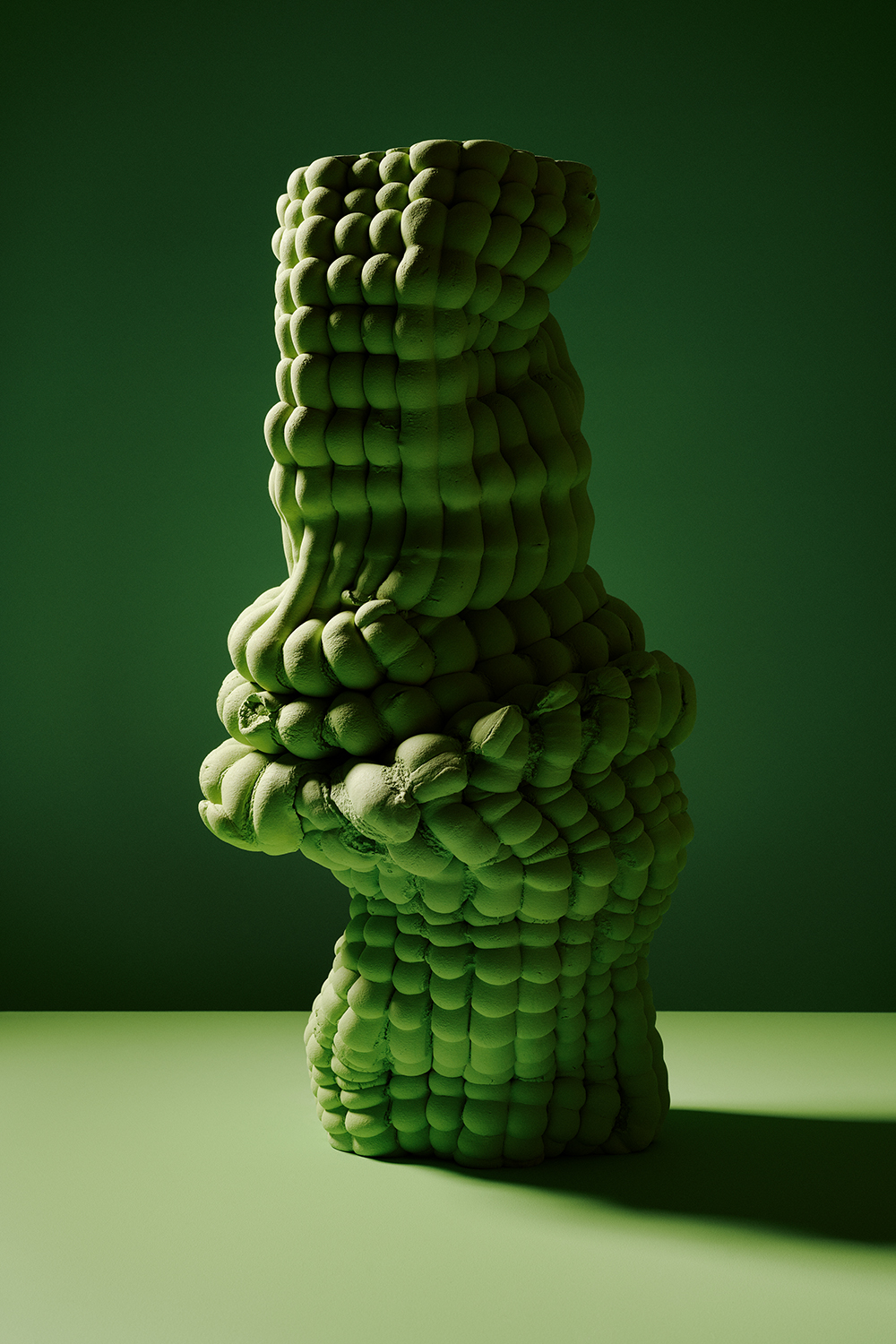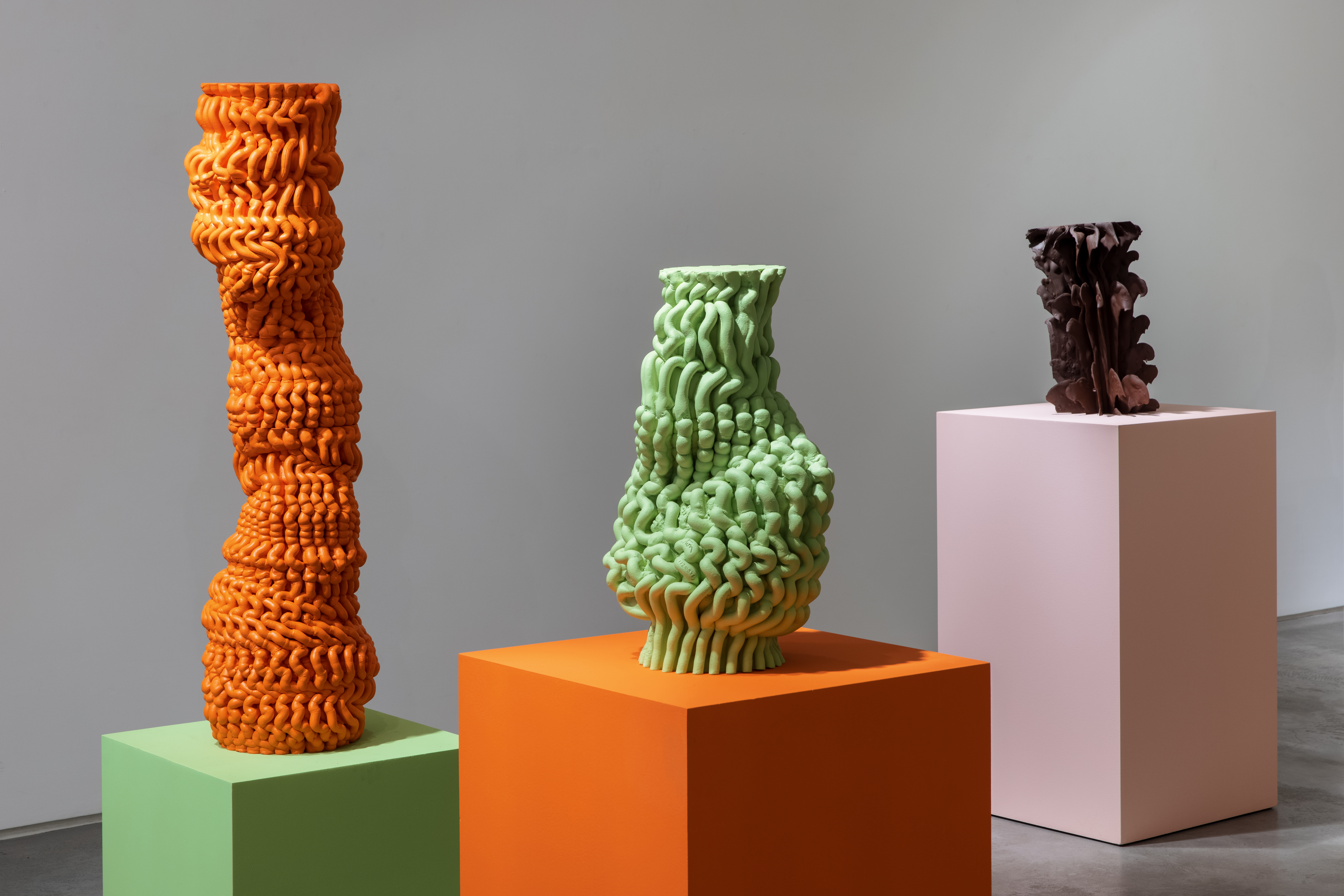
1504211739, 2021
Tight Squeeze at Huxley-Parlour Gallery presents 11 sculptures by Swedish-Chilean artist, Anton Alvarez. The artist works primarily in clay, using a self-constructed, 3 tonne ceramic press which squeezes out distorted columnal sculptures ready to be glazed and fired. Leaving his process partly up to chance, Alvarez implements different tailored filters and pressures, adjusting the height of the machine’s platform to determine the sculptures’ length. What results is a group of heavily textured, uniquely formed sculptures that combine as an autonomous forest of fungi-like objects.
Named The Extruder, Alvarez’s ceramic press shares a portion of the making process, allowing Alvarez to adopt a different role within his practice. Here, Alvarez blends the boundary between craftsmanship and mechanical production, questioning our preconceptions of authorship. In doing so, Alvarez falls within the ideological realm of the Dada artists, a 20th century avant-garde group who attempted to unlock the unconscious using satire and rebellion. The Dada artists eventually paved the way for Fluxus, an international network of artists founded in the 1960s. Fluxus was characterised by a shared affinity for the experimental, implementing a focus on performance, found materials, and collaboration. Both movements placed heavy value on chance and accident, aiming to challenge the definitions of art itself.
The Dadaists heralded chance in their art as a way of rebelling against the conventions of the bourgeois art world. Similarly, the aspect of chance was thought to withdraw otherwise hidden elements of the human experience. Max Ernst, a primary pioneer of the Dada movement, maintained a passive role in his artistic process, viewing himself as a spectator in the development of his own work. Hence, the Dada artists experimented with the random, arbitrary and accidental as a way to circumvent the artist’s conscious control.
In sharing his creative control with The Extruder, Alvarez assigns himself a unique role in his production. He is, of course, present for every element of the making process; feeding clay into The Extruder, glazing, firing, and marking the finished sculpture. However, it is the machine, made by Alvarez itself, without which the process would be useless. Alvarez has used his hand to formulate something far more instrumental in his work. As such, he simultaneously adopts the role of spectator and creator, leaving much of his process up to chance. These unique circumstances allow Alvarez to view his works as part of his audience, bringing their presence into the fabric of the sculptures’ making, relegating himself to an observer. The circumstances Alvarez establishes are somewhat performative, blurring the boundary of the artist-machine relationship, and rejecting the idea of a single author in favour of technology.
1504211739 stands squat, its middle ballooning to reach a slimmer base and upper half. Its exterior is made up of rounded, knobbled growths, tantalisingly tactile in appearance. At once alien and familiar, 1504211739’s vase-like shaping suggests a recognisable domesticity. Alongside its organically crafted green hue, the sculpture’s rumpled texture pools shadows across its surface, at once highlighting its protruding aspects in a sharp light.
What results from the collaboration between The Extruder, Alvarez, and his audience is a collection of sculptures that are at once natural and architectural. Brightly coloured, Alvarez’s sculptures droop, warp, bubble, and extend toward the ceiling in stalagmite fashion. Each sculpture is inherently tactile, rippling with textured knots and folds. Indeed, the sculptures appear to have been formed by chance, organic and spontaneous in equal measures.
(By Eleanor Lerman)
